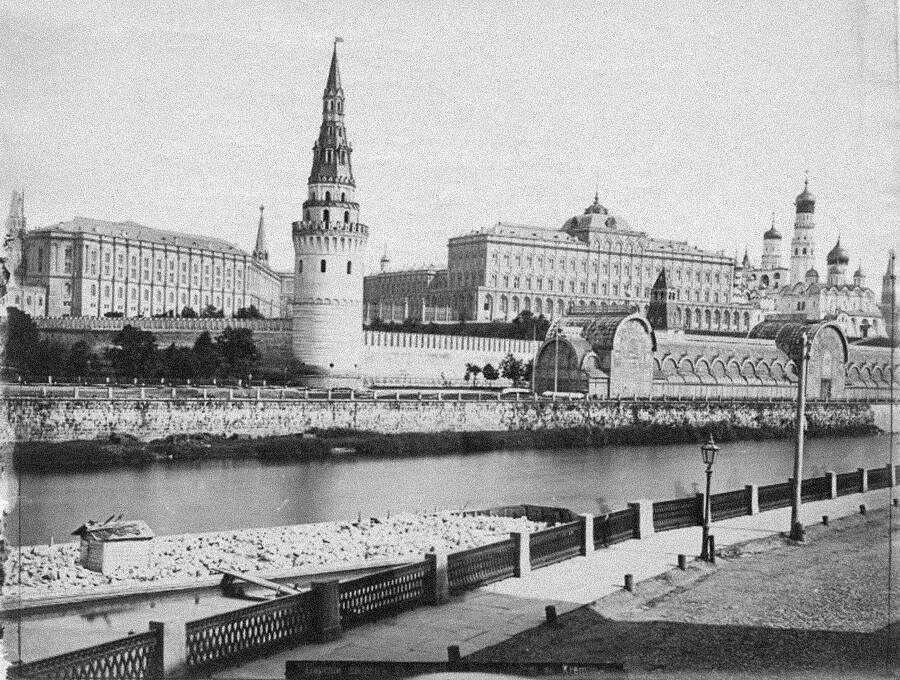
The ‘Ivan the Great’ Bell Tower in the Moscow Kremlin. Until 1860, before the Cathedral of Christ the Savior was built, this was the tallest structure in Moscow.
St. Basil’s Cathedral – undoubtedly, the highlight of the city.
The Tsar Bell with a broken-off piece has never rung. In the middle of the 19th century, it was placed on a pedestal in the Moscow Kremlin; since then, it’s become one of the city’s main attractions.
Below are the then-brand-new Cathedral of Christ the Savior, where construction work was still underway, and the ancient Church of the Exaltation of the Blessed Virgin Mary. Both buildings were destroyed in the 1930s.
A panorama of the Prechistenskaya Embankment with a view of the Kremlin – the heart of Moscow.
The pavilion of the 1872 Polytechnic Exhibition, one of the first buildings wholly made from metal and glass, can be seen on the Kremlin Embankment (bottom right).
The same building, but closer.
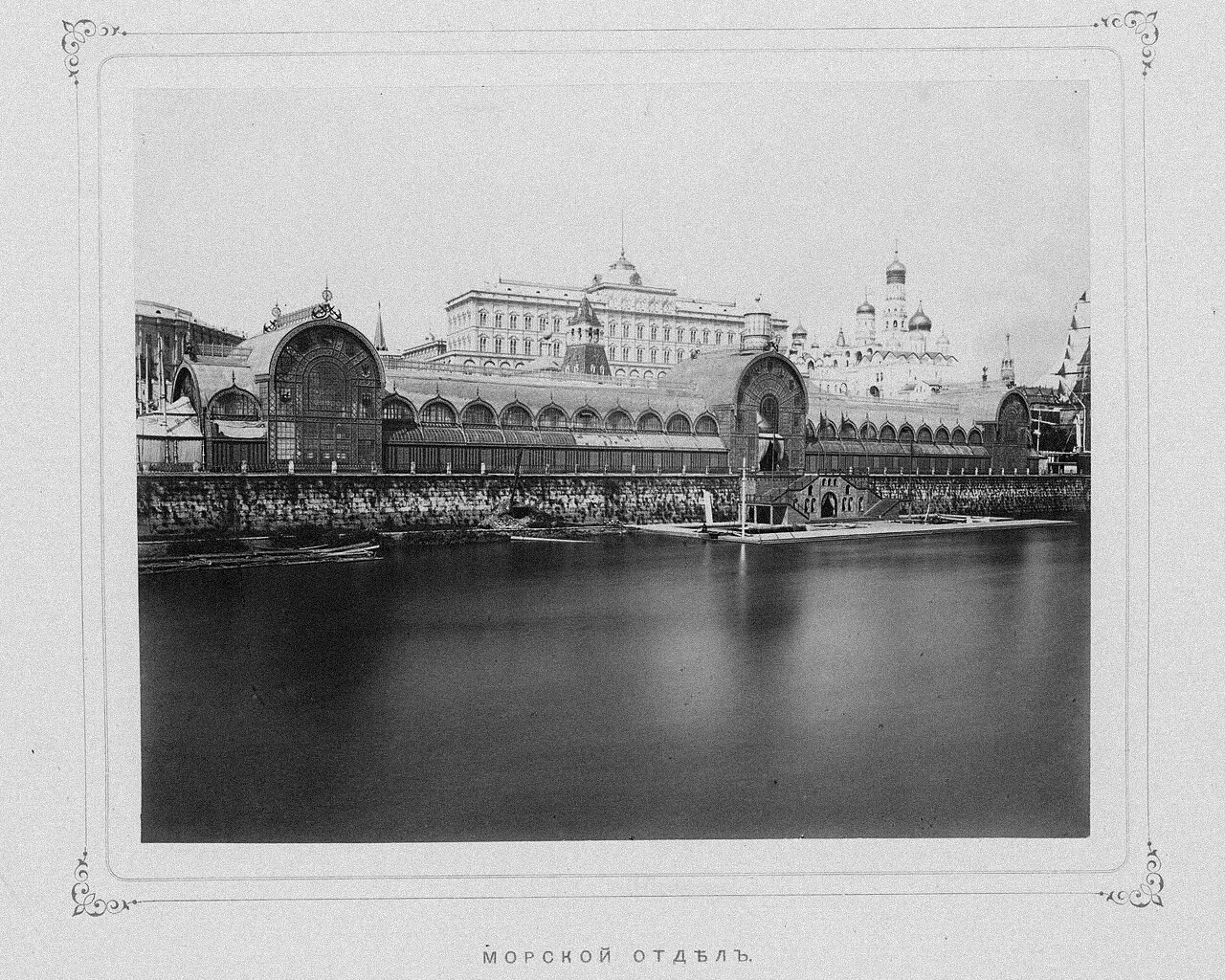
Large exhibitions were (and still are today) taking place in the Moscow Manege, not far from the Kremlin.
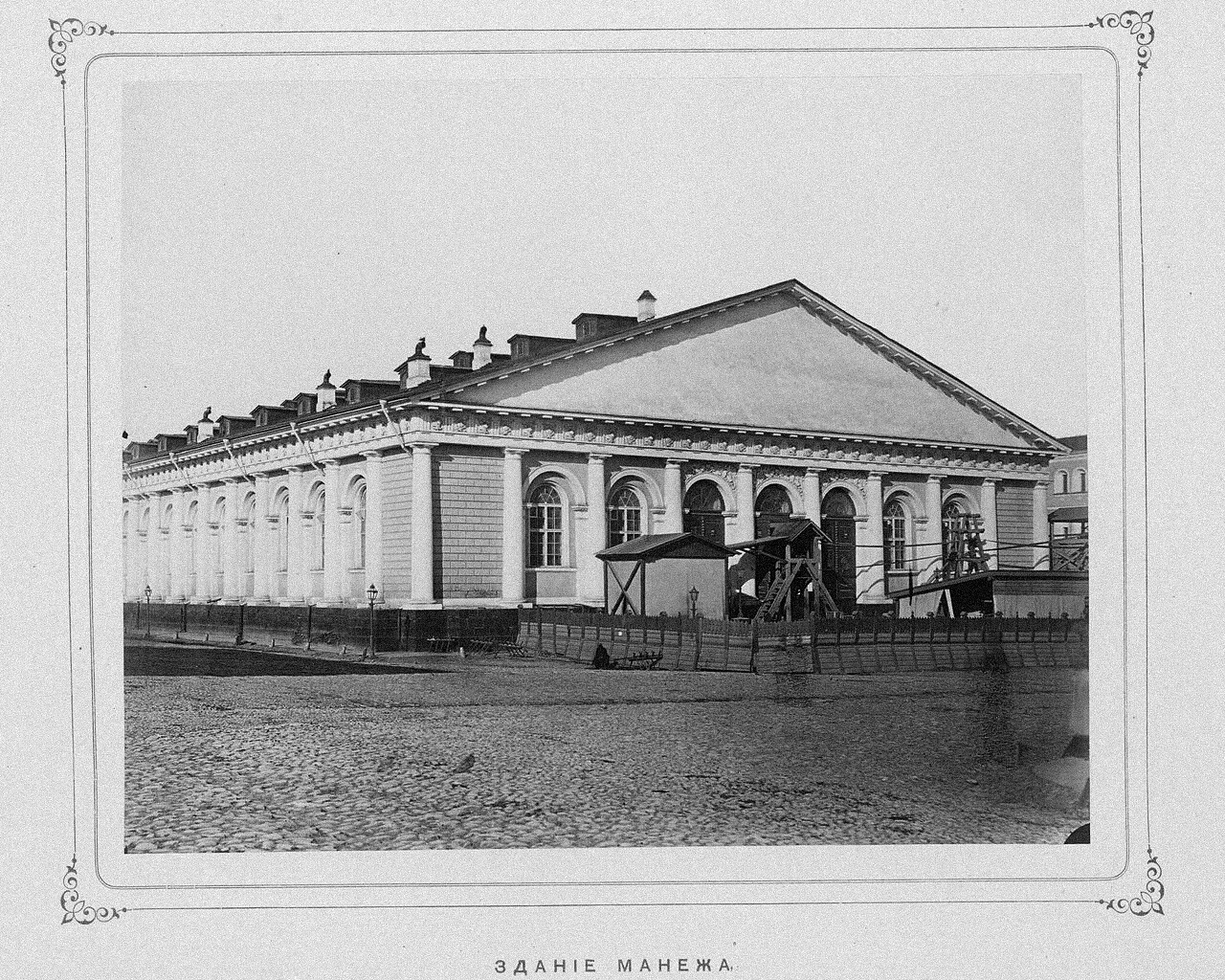
The modern building of the Bolshoi Theater was built in the middle of the 19th century (however, later, it underwent some changes and reconstructions).
Another building that didn’t survive – the Church of the Saint Great Martyr Catherine of the Ascension Convent, which was located inside the Moscow Kremlin.
In 1883, after more than 40 years of construction, the Cathedral of Christ the Savior was finally consecrated and services were conducted in it. The Kremlin Embankment (in the forefront) already had busy traffic.
The Red Gate. This baroque triumphant arch was erected back under Peter the Great; the Bolsheviks tore it down to widen the road. However, the name ‘Red Gate’ remained in the toponymy of Moscow – it’s a square and a metro station, still. On the left is the Church of Three Holy Hierarchs, which was also demolished.
The Chudov Monastery of the Moscow Kremlin looks like a fairy tale palace. Modern tourists won’t see it, it was also demolished under the Bolsheviks.
And this is the Barbara Gate of the Kitay-gorod wall that encircled the entire center of Moscow. Now only its fragments remain.
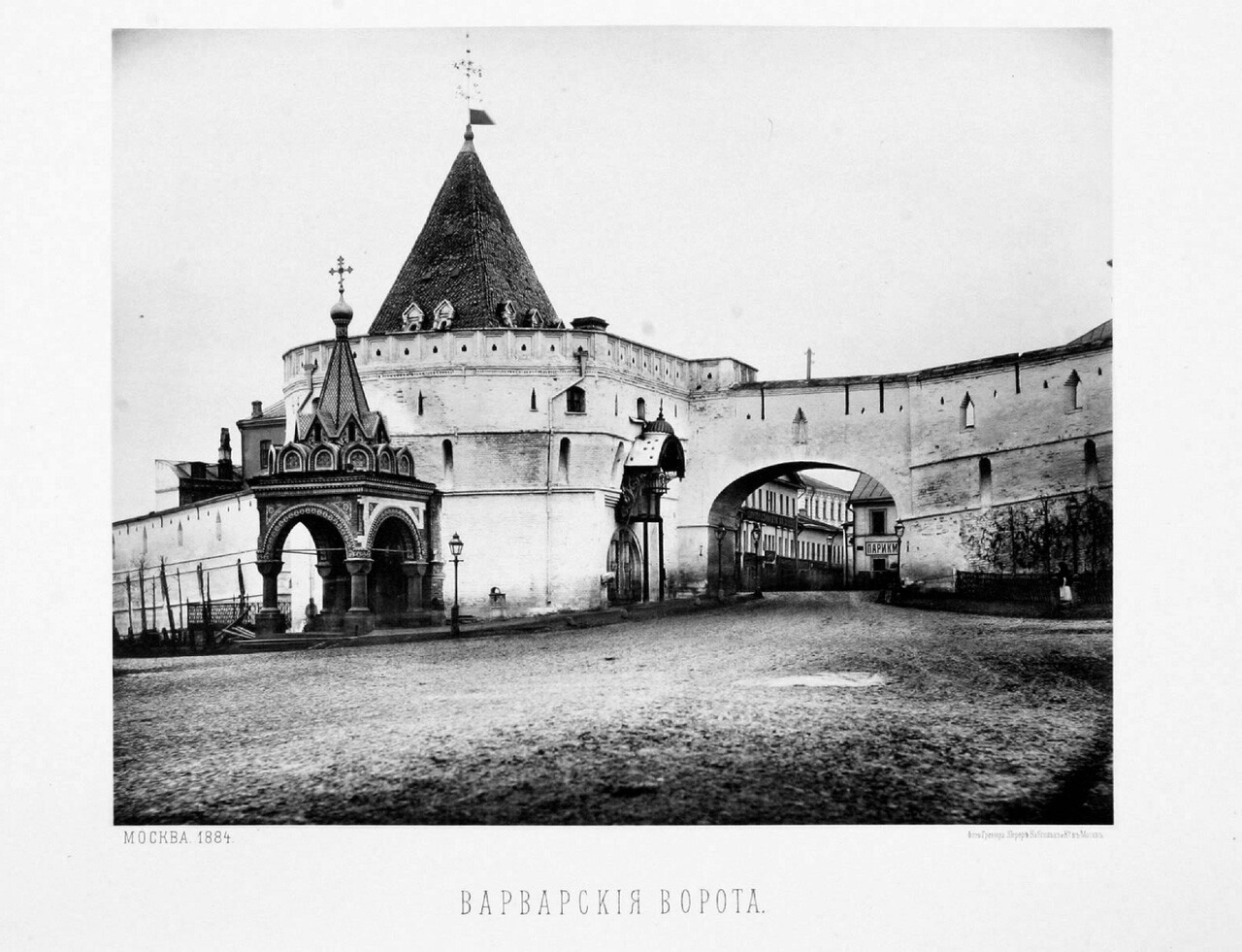
In 1887, on Ilyinsky Gate Square, a memorial to the heroes of Plevna was installed, commemorating the 10-year anniversary of the Battle of Plevna during the Russo-Turkish war.
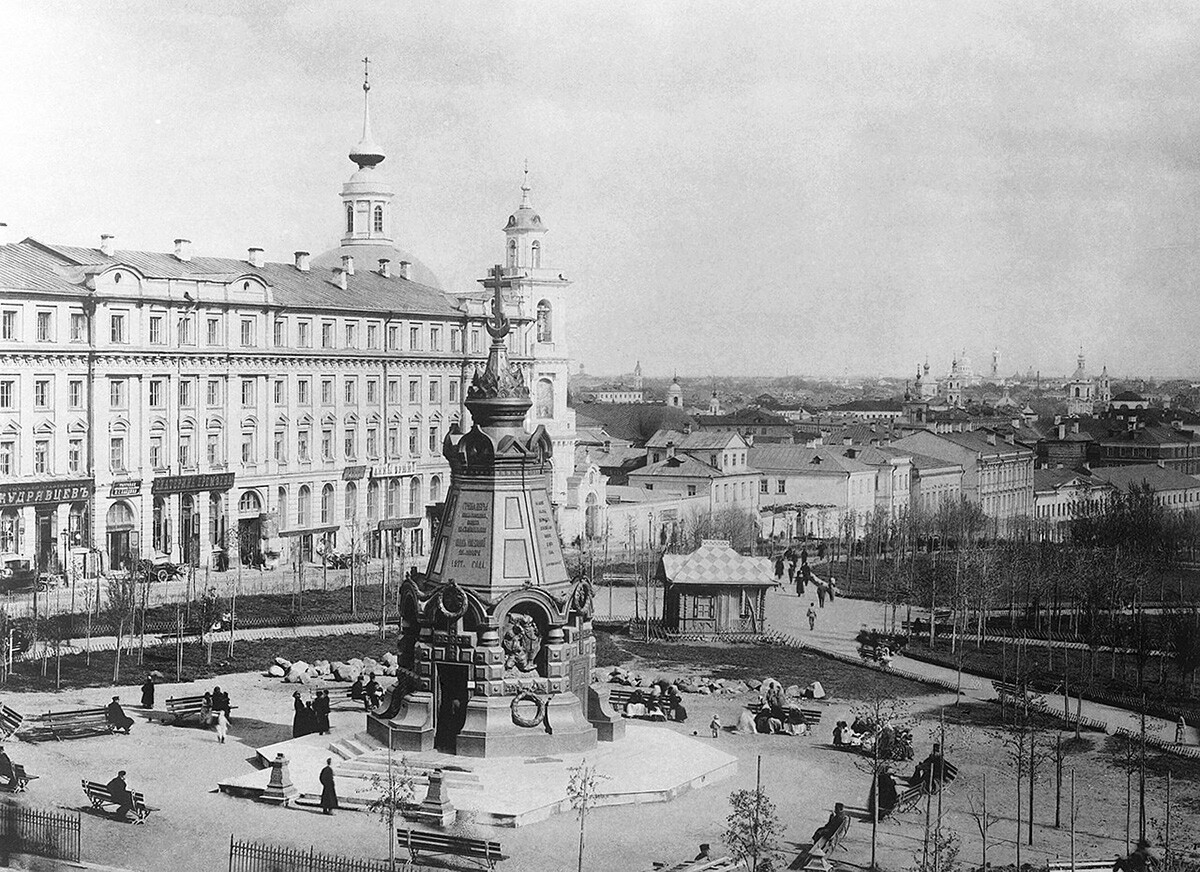
Nikolskaya Street; on the left – the Synod typography, built at the beginning of the 19th century on the site of the Moscow Print Yard. Today, it houses the Historical and Archival Institute of the Russian State University for the Humanities.
Another building that didn’t survive is the Church of St. Nicholas the Wet in Zaryadye.
This luxurious neo-Gothic mansion of Zinaida Morozova was built in 1898 on Spiridonovka Street. Architect Fyodor Schechtel was the project’s author. Today, it hosts the Reception House of the Russian Foreign Ministry.
The Small Nicholas Palace in the Moscow Kremlin was one of the tsars’ residences, when they visited Moscow. Today, this building is lost – it was demolished in 1929 by the Bolsheviks.
Sparrow Hills – the favorite holiday destination for Moscow denizens. The Novodevichy Convent can be seen in the distance. Today, this side of the river has a whole complex of sports buildings and the Luzhniki Stadium.
Lively trade on Okhotny Ryad Street. Today, it hosts the building of the State Duma and Hotel Moskva, but trade still continues out of tradition – in the underground Okhotny Ryad mall.
Below is how Okhotny Ryad Street was decorated during the festivities to celebrate Nicholas II’s coronation in 1896.
Before, the territory of the Moscow Kremlin was open for visitors (now – only by tickets). In the photo – the surviving Cathedral of the Annunciation.
One of the most beautiful buildings of Moscow – the Pashkov House. Since the middle of the 19th century, it has hosted the collection of the Rumyantsev Library, which was reformed and now is known as the Russian State Library (Lenin Library). Today, the building also belongs to the library.
It’s hard for a modern Moscow denizen to imagine that, at some point, there was grass on the granite embankments of the Moskva River.
A tram near the Church of the Nativity of the Theotokos at Putinki, which has survived to this day.
The Monument to Minin and Pozharsky initially stood before the Upper Trading Rows (now known as GUM), but, in Soviet times, it was relocated to St. Basil’s Cathedral.
Another scene that lives only in photos – a horse-drawn tram at Serpukhov Square.
By the way, right until 1930, a tram line ran across the Red Square itself! It was removed, because it was disturbing the parades.
The impressive Igumnov House in the Russian style was built in 1895. Now it serves as the residence of the Ambassador of France in Russia.
The Petrovsky Road Palace in Moscow’s North – at some point, tsars stayed there on the road from St. Petersburg; now it hosts a museum and also a boutique hotel.
Old Moscow. Kuznetsky Most Street. A troika carriage.
Dear readers,
Our website and social media accounts are under threat of being restricted or banned, due to the current circumstances. So, to keep up with our latest content, simply do the following:
If using any of Russia Beyond's content, partly or in full, always provide an active hyperlink to the original material.
Subscribe
to our newsletter!
Get the week's best stories straight to your inbox